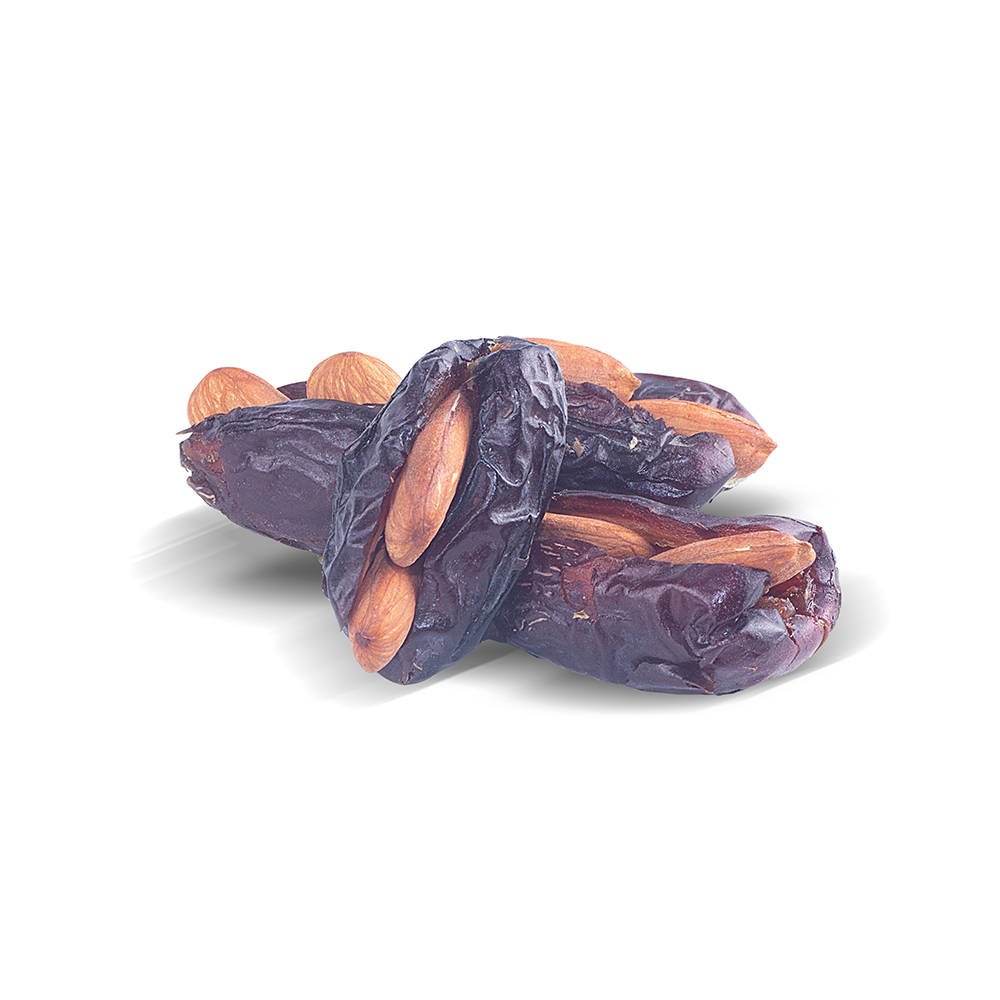Health
Deț: Transforming Efficiency and Innovation Across Industries

What is Deț? You might be scratching your head, wondering what this term means and why it’s suddenly a hot topic. Deț, pronounced “dehts,” is an innovative concept that’s making waves across various industries. Whether you’re a tech enthusiast, a business owner, or just a curious individual, understanding Deț could open up new horizons for you.
Historical Background
To grasp what Deț truly represents, we need to dive into its roots. De’ț originated as a solution to streamline complex processes, particularly in fields that demanded high efficiency and precision. Initially, it was confined to niche markets, but its potential quickly became evident.
Evolution Over Time
Over the years, De’ț has evolved from a simple idea into a multifaceted tool. Advances in technology have propelled its growth, integrating it into mainstream applications. What started as a small-scale innovation is now a cornerstone in various sectors.
Key Elements
At its core, Deț comprises several key elements: data analysis, automation, and user interaction. These components work in harmony to deliver a seamless experience.
How They Interact
The magic of De’ț lies in how these elements interact. Data analysis provides the insights, automation handles repetitive tasks, and user interaction ensures that the system adapts to individual needs. This triad creates a robust framework that enhances efficiency.
Technology and Innovation
In the tech world, Deț is a game-changer. It drives innovation by enabling rapid prototyping and testing. Developers can now create and refine applications faster than ever before, thanks to De’ț.
Everyday Use Cases
Beyond tech, Deț finds applications in everyday life. From smart home systems to personalized shopping experiences, De’ț is transforming how we interact with the world around us.
Efficiency and Productivity
One of the standout benefits of De’ț is its ability to boost efficiency and productivity. By automating mundane tasks, Deț frees up time for more critical activities, allowing you to focus on what truly matters.
Cost-Effectiveness
Implementing Deț can also be cost-effective. With streamlined processes and reduced errors, businesses save on operational costs. It’s an investment that pays off in the long run.
Potential Drawbacks
However, like any technology, Deț comes with its own set of challenges. Initial setup costs can be high, and there may be a learning curve for users.
Overcoming Obstacles
But don’t let these drawbacks deter you. With proper planning and support, the obstacles can be overcome. Investing in training and choosing the right implementation strategy are key to leveraging De’ț successfully.
Emerging Trends
The future of Deț looks promising. Emerging trends suggest that De’ț will become even more integrated into our daily lives. From augmented reality to AI-driven solutions, the possibilities are endless.
Predictions and Forecasts
Experts predict that Deț will continue to evolve, adapting to new challenges and opportunities. Staying ahead of these trends will be crucial for anyone looking to capitalize on Deț.
Healthcare
In healthcare, Deț is revolutionizing patient care. From predictive analytics to telemedicine, it’s improving outcomes and making healthcare more accessible.
Education
Education is another sector benefiting from De’ț. Personalized learning experiences and efficient administrative processes are just the beginning.
Business
In the business world, Deț is a powerful tool. It enhances decision-making, optimizes operations, and drives growth.
How to Implement Deț in Your Life
Thinking about incorporating Deț into your life? Start small. Identify areas where Deț can make a difference and gradually expand its use.
Step-by-Step Guide
Assess Your Needs: Determine where De’ț can add value.
Choose the Right Tools: Select software and platforms that fit your requirements.
Train and Educate: Ensure that everyone involved understands how to use Deț effectively.
Monitor and Adjust: Continuously evaluate the impact and make necessary adjustments.
Case Studies of Successful Deț Implementation
Consider the case of a retail company that implemented Deț to manage its inventory. By automating stock tracking and order processing, they reduced waste and improved customer satisfaction.
Lessons Learned
From these examples, we learn that careful planning and execution are crucial. Success with Deț isn’t just about the technology; it’s about how you use it.
Debunking Myths
There’s a lot of misinformation about De’ț. Some believe it’s too complex or only for large enterprises. In reality, Deț is accessible and beneficial for organizations of all sizes.
Clarifying Facts
Understanding the true capabilities of Deț can dispel these myths. It’s a versatile tool that can be tailored to meet diverse needs.
Insights from Professionals
Experts agree that Deț is a transformative force. Their insights highlight the importance of staying informed and embracing new technologies.
Industry Perspectives
Industry leaders emphasize the strategic advantages of De’ț. It’s not just about keeping up with trends; it’s about staying ahead of the curve.
Recommended Software
There are numerous tools available to help you get started with De’ț. Some popular options include automation platforms, data analytics software, and user-friendly interfaces.
Learning Platforms
To further your knowledge, consider enrolling in courses or workshops focused on Deț. Online platforms offer a wealth of resources to help you master this technology.
Conclusion
Deț is more than just a buzzword. It’s a powerful tool that can revolutionize the way we work and live. By understanding its origins, components, and applications, you can harness its potential to achieve greater efficiency and productivity. As with any technology, there are challenges, but with the right approach, these can be overcome. The future of De’ț is bright, and staying informed will ensure you reap its benefits
FAQs
What is De’ț?
Deț is an innovative concept that integrates data analysis, automation, and user interaction to streamline processes and enhance efficiency.
How can De’ț benefit my business?
De’ț can boost productivity, reduce costs, and improve decision-making by automating repetitive tasks and providing valuable insights.
Is De’ț difficult to implement?
While there may be initial challenges, proper planning and support can make the implementation process smooth and successful.
What industries can benefit from De’ț?
De’ț is versatile and can be applied in various sectors, including healthcare, education, and business, to improve outcomes and efficiency.
Where can I learn more about De’ț?
Numerous online platforms offer courses and resources to help you understand and implement Deț effectively.
Health
Ancient Grains for Breakfast: A Nutritious Start to Your Day

Breakfast is often called the most important meal of the day, and for good reason. A balanced breakfast can set the tone for the rest of your day, providing the energy and nutrients needed to start your morning right. In recent years, ancient grains have become a popular choice for breakfast, thanks to their rich nutritional profile and unique flavors. But what exactly are ancient grains, and why should you consider incorporating them into your morning routine?
What Are Ancient Grains?
Ancient grains are a group of cereals and seeds that have remained relatively unchanged for thousands of years. Unlike modern grains, such as wheat and corn, which have been heavily modified through selective breeding to increase yield and improve resistance to pests, ancient grains retain their original genetic composition. Some of the most well-known ancient grains include quinoa, spelt, farro, millet, amaranth, teff, barley, and kamut.
These grains have been cultivated for centuries by various civilizations and have recently gained popularity due to their health benefits, sustainable growth practices, and versatility in the kitchen.
The Nutritional Benefits of Ancient Grains
One of the key reasons ancient grains are gaining traction as a breakfast option is their exceptional nutritional value. They are packed with essential nutrients, including:
- Fiber: Most ancient grains are high in dietary fiber, which aids in digestion and helps maintain a healthy gut. A fiber-rich diet can also contribute to lower cholesterol levels and better blood sugar control.
- Protein: Many ancient grains, such as quinoa and amaranth, contain more protein than typical grains like rice or corn. Quinoa, in particular, is considered a complete protein, meaning it contains all nine essential amino acids that the body cannot produce on its own.
- Vitamins and Minerals: Ancient grains are excellent sources of vital vitamins and minerals, including iron, magnesium, potassium, and B vitamins, which are crucial for energy production and maintaining overall health.
- Antioxidants: Some ancient grains, such as teff and millet, contain higher levels of antioxidants than modern grains. Antioxidants help protect the body from oxidative stress and reduce inflammation.
Why Choose Ancient Grains for Breakfast?
Choosing ancient grains for breakfast can be a game-changer for your diet and overall health. Here are several reasons to consider incorporating them into your morning routine:
- Balanced Nutrition: Ancient grains provide a balanced combination of complex carbohydrates, protein, and healthy fats. This balance helps maintain energy levels throughout the morning, preventing the mid-morning slump often caused by high-sugar breakfast options.
- Sustained Energy Release: The complex carbohydrates found in ancient grains are digested more slowly than refined grains, providing a sustained release of energy. This slow digestion helps keep you feeling full longer and reduces the urge to snack between meals.
- Gluten-Free Options: For those with gluten sensitivities or celiac disease, several ancient grains, such as quinoa, millet, and amaranth, are naturally gluten-free, offering a safe and nutritious alternative to traditional wheat-based breakfast foods.
- Versatility and Flavor: Ancient grains come in a variety of flavors and textures, making them a versatile addition to your breakfast repertoire. They can be used in a wide range of dishes, from hot porridge to cold grain salads, granola bars, or even smoothies.
Delicious Ways to Enjoy Ancient Grains for Breakfast
There are countless ways to incorporate ancient grains into your breakfast. Here are a few ideas to get you started:
- Ancient Grain Porridge: Start your day with a warm bowl of porridge made from quinoa, farro, or amaranth. Cook the grains in milk or a dairy-free alternative, add a touch of honey or maple syrup for sweetness, and top with fresh fruits, nuts, and seeds for added flavor and nutrition.
- Granola with Ancient Grains: Create a homemade granola mix using a combination of oats, quinoa flakes, millet, and puffed amaranth. Add your favorite nuts, dried fruits, and a sprinkle of cinnamon for a crunchy, nutritious topping for yogurt or smoothie bowls.
- Breakfast Grain Bowls: Combine cooked ancient grains like farro or spelt with sautéed vegetables, a poached egg, and a drizzle of olive oil for a savory breakfast bowl. This protein-packed meal is perfect for those who prefer a hearty, savory start to their day.
- Ancient Grain Pancakes or Waffles: Mix quinoa flour or spelt flour into your pancake or waffle batter for a nutritious twist on a classic breakfast favorite. Top with fresh berries, a dollop of Greek yogurt, and a drizzle of honey for a deliciously healthy morning treat.
The Sustainable Choice
Beyond their nutritional benefits, ancient grains are also a more sustainable option for the environmentally conscious consumer. Many ancient grains are resilient crops that require fewer resources, such as water and pesticides, to grow compared to modern grains. They are often better suited to a variety of growing conditions, including drought-prone areas, making them an excellent choice for sustainable agriculture.
By choosing ancient grains for breakfast, you are not only nourishing your body but also supporting farming practices that are kinder to the planet.
Conclusion
Incorporating ancient grains into your breakfast routine is a simple yet effective way to enhance your diet and support your overall health. With their rich nutrient profile, delicious flavors, and versatility, ancient grains are a wholesome option that can help you start your day on the right foot. Whether you enjoy them in a warm porridge, a crunchy granola, or a savory breakfast bowl, ancient grains offer endless possibilities for a nutritious and satisfying breakfast.
Health
The Nutritional Powerhouse: Exploring the Benefits of Dry Fruits

Dry fruits, often referred to as dried fruits, have long been a staple in various cultures around the world. They offer a convenient and nutritious way to enjoy fruits year-round. This article delves into what dry fruits are, their health benefits, and how to incorporate them into your diet.
What Are Dry Fruits?
Dry fruits are simply fresh fruits that have had most of their water content removed through drying methods. This process concentrates the sugars, flavors, and nutrients, making dry fruits a sweet and nutritious snack. Common examples include raisins (dried grapes), apricots, figs, dates, and prunes.
Nutritional Benefits
- Rich in Vitamins and Minerals
- Iron: Dried apricots and figs are excellent sources of iron, which is crucial for blood health and preventing anemia.
- Potassium: Dates and prunes are high in potassium, which helps maintain healthy blood pressure and supports muscle and nerve function.
- Calcium: Some dry fruits, like figs, offer a good amount of calcium, important for bone health.
- High in Antioxidants
- Dry fruits are rich in antioxidants, which combat free radicals in the body. Antioxidants like flavonoids and polyphenols found in dry fruits can help reduce oxidative stress and inflammation.
- Dietary Fiber
- The drying process retains the fiber content of fruits, which aids in digestion and helps prevent constipation. Fiber also contributes to a feeling of fullness, which can be beneficial for weight management.
- Natural Sweeteners
- Dry fruits are naturally sweet and can be a healthier alternative to refined sugars in recipes. They provide a more complex flavor and additional nutrients compared to processed sweeteners.
Health Benefits
- Digestive Health
- The high fiber content in dry fruits promotes healthy digestion and regular bowel movements. For example, prunes are well-known for their natural laxative effect.
- Energy Boost
- Due to their high natural sugar content, dry fruits are an excellent energy booster. They provide a quick source of energy, making them a great snack for athletes or anyone needing a pick-me-up.
- Heart Health
- Many dry fruits contain heart-healthy nutrients. For instance, dates are rich in potassium, which helps regulate blood pressure and reduce the risk of stroke. Additionally, the antioxidants in dry fruits can contribute to heart health by reducing inflammation and improving cholesterol levels.
- Bone Health
- Certain dry fruits like figs are high in calcium, which is essential for maintaining strong bones and preventing osteoporosis.
Incorporating Dry Fruits into Your Diet
- Snacks
- Dry fruits make a great standalone snack. They are portable, easy to store, and require no preparation.
- Baking
- Add chopped dry fruits to baked goods like muffins, cookies, and bread for natural sweetness and extra texture.
- Salads and Sides
- dry fruits into salads or serve them as a side dish. They add a sweet contrast to savory flavors and increase the dish’s nutritional value.
- Trail Mixes
- Combine dry fruits with nuts and seeds to create a nutritious trail mix. This blend is perfect for a quick snack on the go or a healthy addition to your lunchbox.
- Breakfast
- Stir dry fruits into oatmeal, yogurt, or smoothies for a tasty and nutrient-rich start to your day.
Conclusion
Dry fruits are more than just a convenient snack; they are nutritional powerhouses that offer numerous health benefits. Packed with vitamins, minerals, and antioxidants, they can support overall health, enhance energy levels, and add delightful sweetness to a variety of dishes. By incorporating dry fruits into your diet, you can enjoy their many benefits while savoring their rich flavors.
Health
The Path to Wellness: Embracing Healthy Eating

In today’s fast-paced world, where convenience often trumps nutrition, the idea of healthy eating might seem like a daunting challenge. However, embracing a balanced diet is one of the most effective ways to improve overall health, boost energy levels, and prevent chronic diseases. Healthy eating isn’t about restrictive diets or deprivation; it’s about making informed choices that nourish your body and enhance your well-being.
Understanding Healthy Eating
Healthy eating involves more than just choosing fruits and vegetables over junk food. It’s about understanding the role different nutrients play in your body and how to incorporate them into your daily meals. A well-balanced diet includes:
- Fruits and Vegetables: These should be the cornerstone of your diet. They are rich in essential vitamins, minerals, and fiber. Aim for a variety of colors on your plate to ensure you’re getting a broad spectrum of nutrients.
- Whole Grains: Unlike refined grains, whole grains retain their nutrient-rich bran and germ. Foods like brown rice, quinoa, and whole-wheat products provide fiber, iron, and B vitamins.
- Lean Proteins: Proteins are vital for muscle repair and overall bodily functions. Opt for lean sources such as chicken, turkey, fish, beans, and legumes. Plant-based proteins are also a great choice for those looking to reduce their meat consumption.
- Healthy Fats: Not all fats are created equal. Unsaturated fats, found in avocados, nuts, seeds, and olive oil, can help lower bad cholesterol levels and support heart health. Limit saturated fats and avoid trans fats.
- Dairy or Dairy Alternatives: Dairy products are a good source of calcium and vitamin D, which are crucial for bone health. If you’re lactose intolerant or prefer plant-based options, fortified almond milk or soy milk are excellent alternatives.
Tips for Making Healthier Choices
- Plan Your Meals: Planning ahead helps you make better food choices and avoid the temptation of unhealthy snacks. Creating a weekly meal plan and shopping list can make the process easier.
- Portion Control: Even healthy foods can contribute to weight gain if consumed in large quantities. Be mindful of portion sizes, and listen to your body’s hunger and fullness cues.
- Stay Hydrated: Water is essential for all bodily functions. Aim to drink plenty of water throughout the day, and limit sugary beverages and excessive caffeine.
- Cook at Home: Preparing meals at home gives you control over the ingredients and cooking methods, making it easier to maintain a healthy diet. Experiment with new recipes and cooking techniques to keep meals interesting.
- Read Labels: When purchasing packaged foods, check the nutritional labels. Look for items with lower amounts of added sugars, sodium, and unhealthy fats.
- Mindful Eating: Pay attention to what and when you eat. Avoid eating in front of the TV or computer, and take the time to savor your meals. This can help you enjoy your food more and prevent overeating.
The Benefits of Healthy Eating
Adopting a healthy eating pattern can have profound effects on your overall health. Here are some key benefits:
- Improved Heart Health: A diet rich in fruits, vegetables, whole grains, and healthy fats can help lower the risk of heart disease and stroke.
- Better Weight Management: Eating a balanced diet helps regulate weight by providing essential nutrients and promoting satiety.
- Enhanced Energy Levels: A well-rounded diet supports steady energy levels throughout the day, reducing the likelihood of fatigue and irritability.
- Stronger Immune System: Nutrient-dense foods boost your immune system, making it easier for your body to fight off infections and illnesses.
- Reduced Risk of Chronic Diseases: Healthy eating can lower the risk of developing chronic conditions such as diabetes, hypertension, and certain cancers.
Conclusion
Healthy eating is a lifelong journey rather than a quick fix. By making thoughtful food choices and adopting balanced eating habits, you can pave the way to a healthier, more vibrant life. Remember, small changes can lead to significant improvements over time. Start by incorporating a few healthy habits into your daily routine, and gradually build on them. Your body will thank you for the effort, and you’ll enjoy the many benefits that come with nourishing your health through food.
-

 Games6 months ago
Games6 months agoExploring the Fascinating World of HSNIME
-

 Health6 months ago
Health6 months agoChicken Calories: Exploring Nutritional Benefits and Culinary Versatility
-

 Blog6 months ago
Blog6 months agoUnlocking zVideo: Your Comprehensive Guide
-

 News6 months ago
News6 months agoRai Van: Discover Its Importance In Modern Transportation 2024
-

 Blog6 months ago
Blog6 months agoBlog Arcyart: A Comprehensive and Informative Guide
-

 Fashion6 months ago
Fashion6 months agoYour First Eyelash Extensions Experience Awaits: A Guide to Luscious Lashes
-

 Business6 months ago
Business6 months agoPrince Narula Digital PayPal: Your Ultimate Guide
-

 Entertainment6 months ago
Entertainment6 months agoCommunity Speakers: Delivering High-Quality Sound and Long-Term Performance
